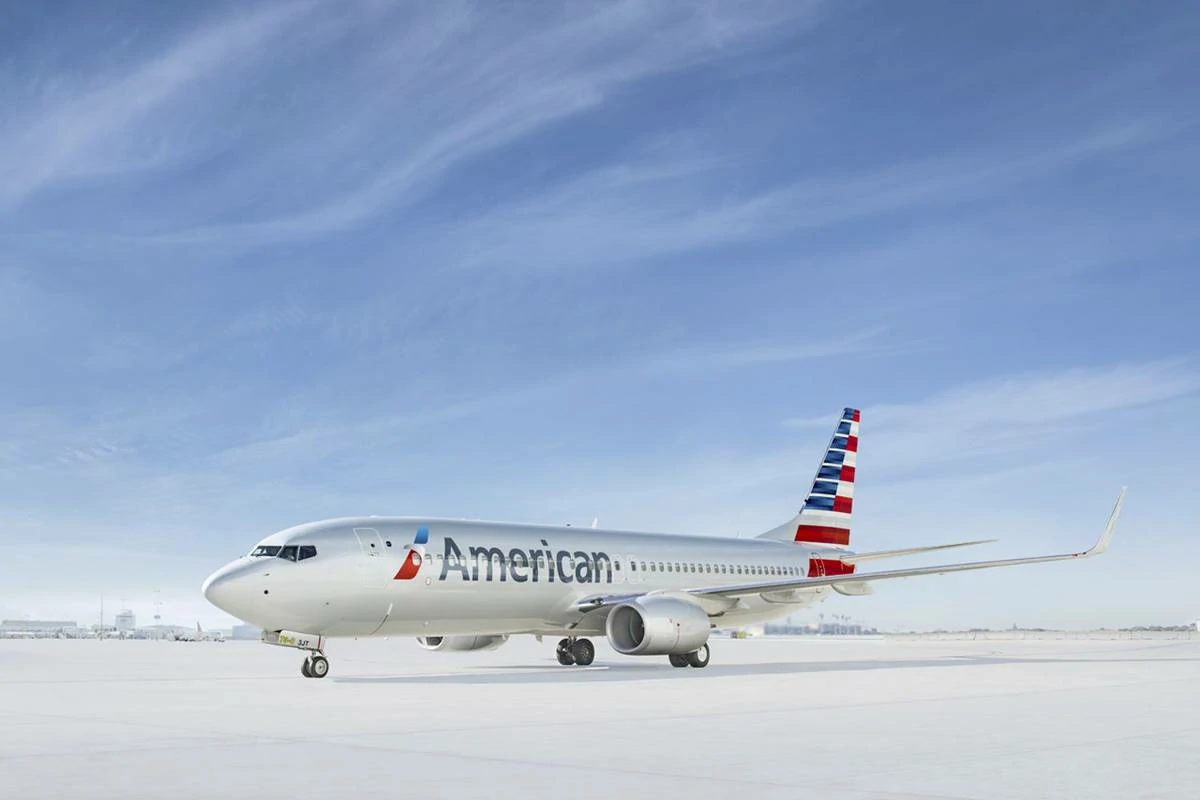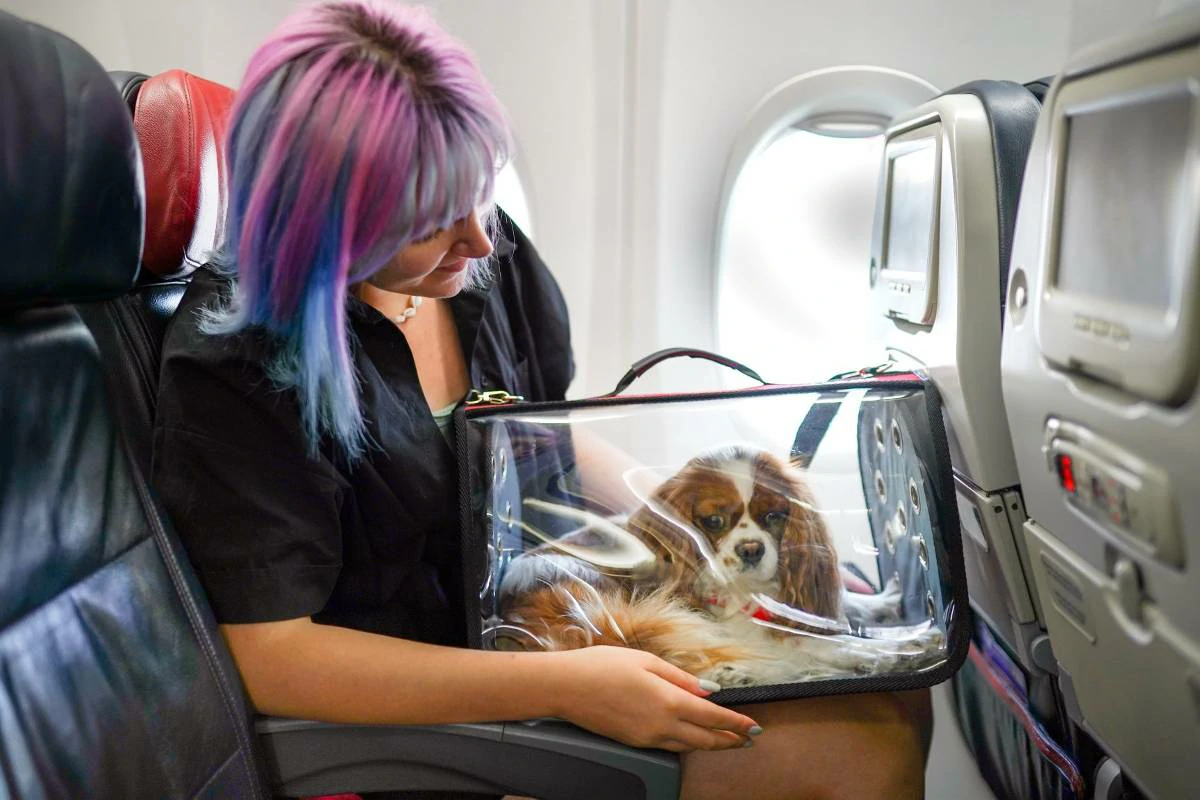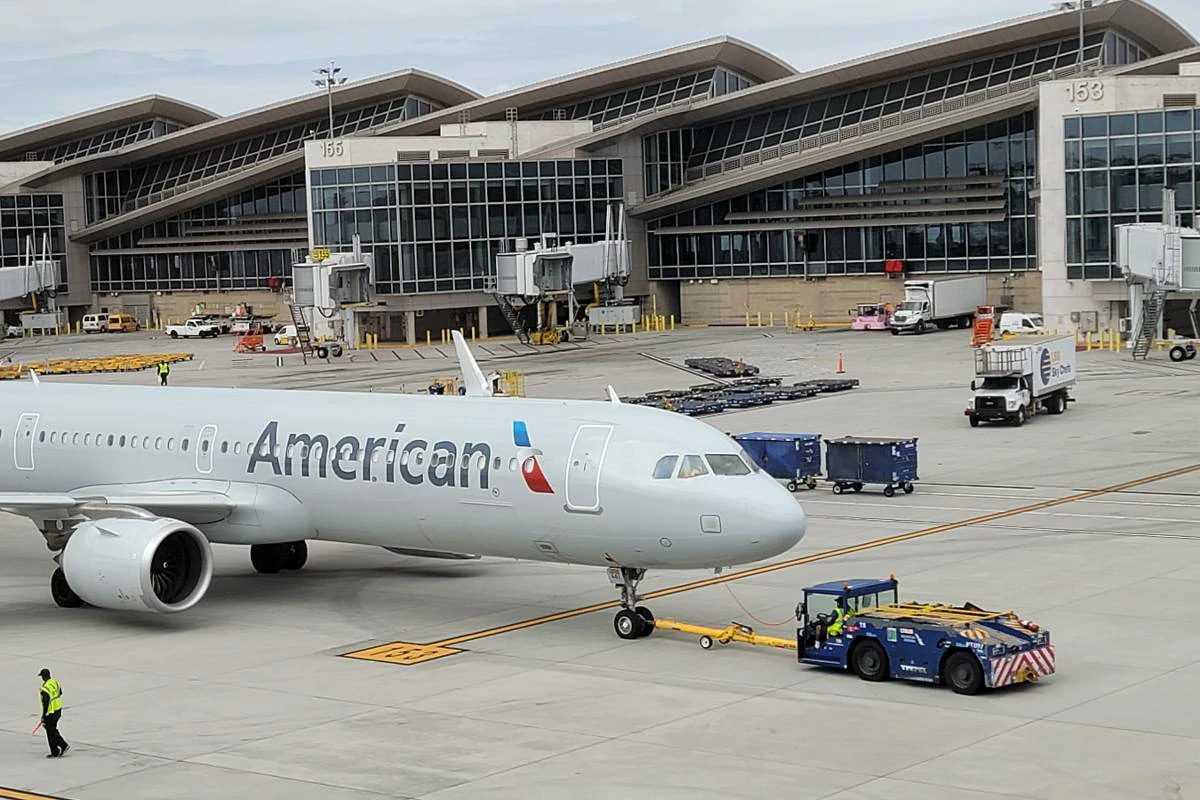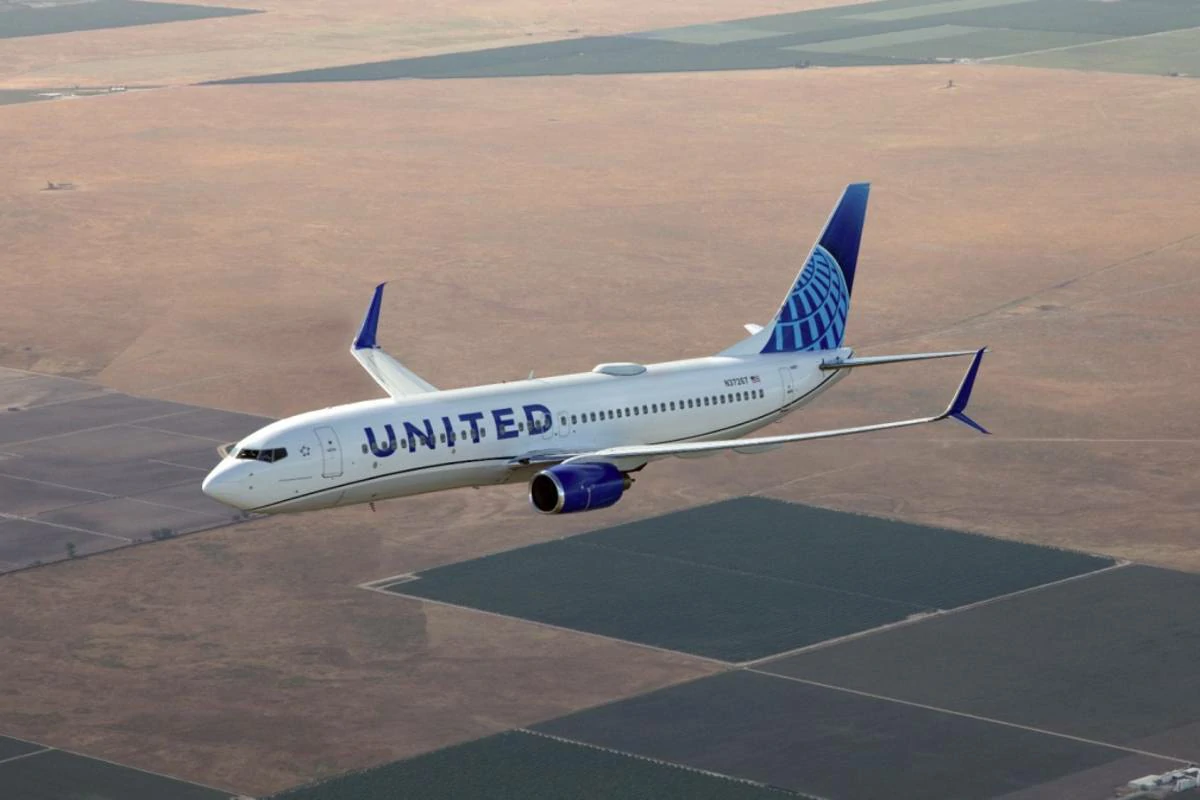What airlines let 2 year old’s fly free? Answer is – Most major airlines allow children under the age of 2 to fly for free domestically as “lap infants”, meaning they sit on the lap of an adult traveler. However, there are often fees associated with international flights for lap infants. A few airlines sometimes offer special promotions where children under a certain age can fly free, even if they occupy a seat. The most reliable way to find deals is to check with specific airlines about current promotions.
Summary
- Most US domestic airlines allow 2-year-olds to fly free as lap infants.
- International flights may incur taxes and fees for lap infants.
- Some airlines offer special promotions where kids under a certain age can fly free.
- Frontier Airlines has a program where kids under 15 can sometimes fly free with an adult discount fare purchase.
- Southwest’s Companion Pass allows a designated companion to fly free (plus taxes and fees) with the pass holder.
What airlines let 2 year old’s fly free?
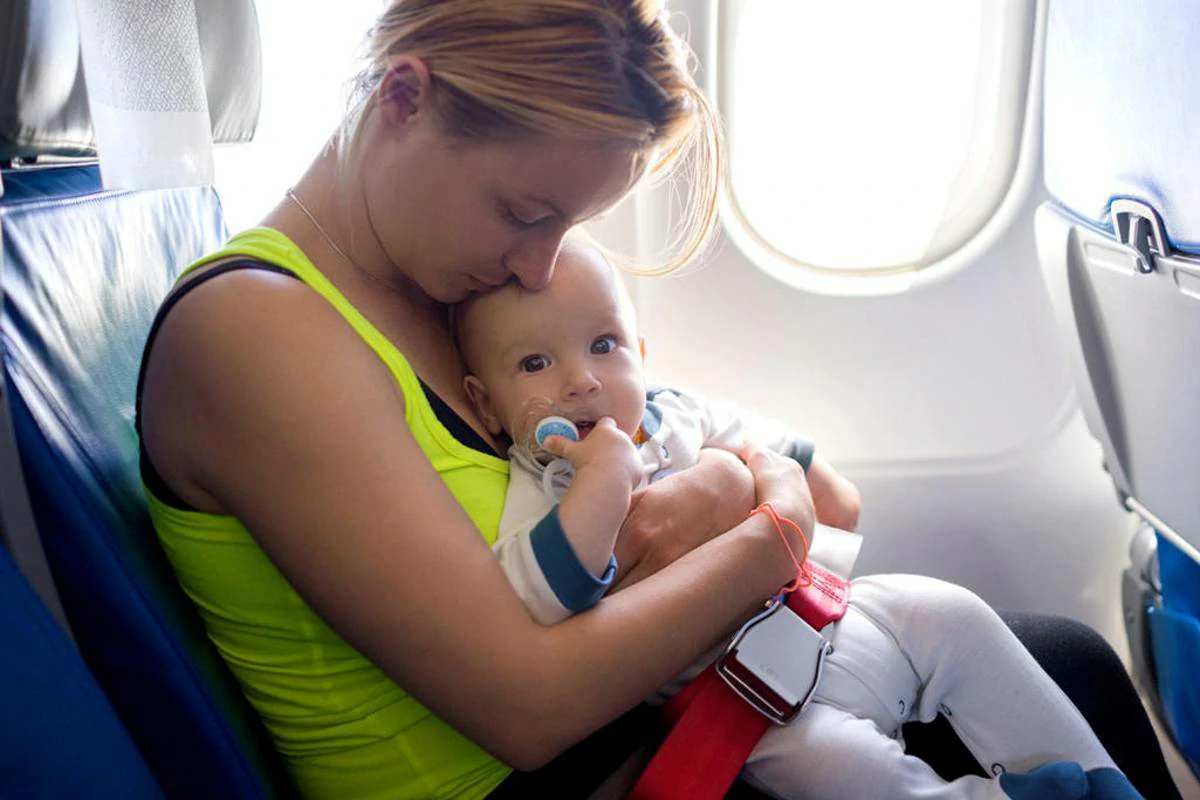
Traveling with young children can be a fantastic way to create lasting memories and broaden their horizons. However, the cost of airfare can add up quickly, especially for families.
One way to potentially save money on flights is to take advantage of airline policies that allow children under the age of two to fly as “lap infants”.
This can be an attractive option, but it’s important to understand how lap infant policies work and what the implications are for you and your child.
The Cost of Family Air Travel
The price of airline tickets is a major factor for most families planning a trip. According to a 2023 study by CheapAir.com, the average domestic flight costs $350 roundtrip.
If you’re traveling with multiple children, those costs can multiply quickly. Lap infant policies offer a potential way to ease this financial burden, as you won’t have to purchase a separate seat for children under two.
Understanding Lap Infant Policies
So, what exactly does the term “lap infant” mean and how do these policies work? Here’s a breakdown of the key things you need to know:
Age Restrictions: Most airlines allow children under the age of two to fly domestically as lap infants. This means they can travel without their own assigned seat and must sit on the lap of an adult passenger for the duration of the flight.
Safety Considerations: While flying with a lap infant can be a safe option, there are some additional safety considerations to keep in mind. The Federal Aviation Administration (FAA) strongly recommends the use of a child restraint system (CRS) for any child, even those traveling as lap infants. A CRS, similar to a car seat, can provide better protection in the event of turbulence or unexpected incidents. You can check with the airline about their rules regarding bringing your own CRS onboard.
International Flights: Lap infant policies for international flights can vary depending on the airline and destination. While children under two may still be able to fly for free, there are often taxes and fees associated with international travel for lap infants.
Sara Nelson Expert Opinion
Sara Nelson, President of the Association of Flight Attendants-CWA, emphasizes the importance of being prepared: “Traveling with a lap infant requires extra planning and attention to detail. Ensure you understand the airline’s specific policies and bring along any necessary comfort items for your little one.”
What Does “Lap Infant” Mean?
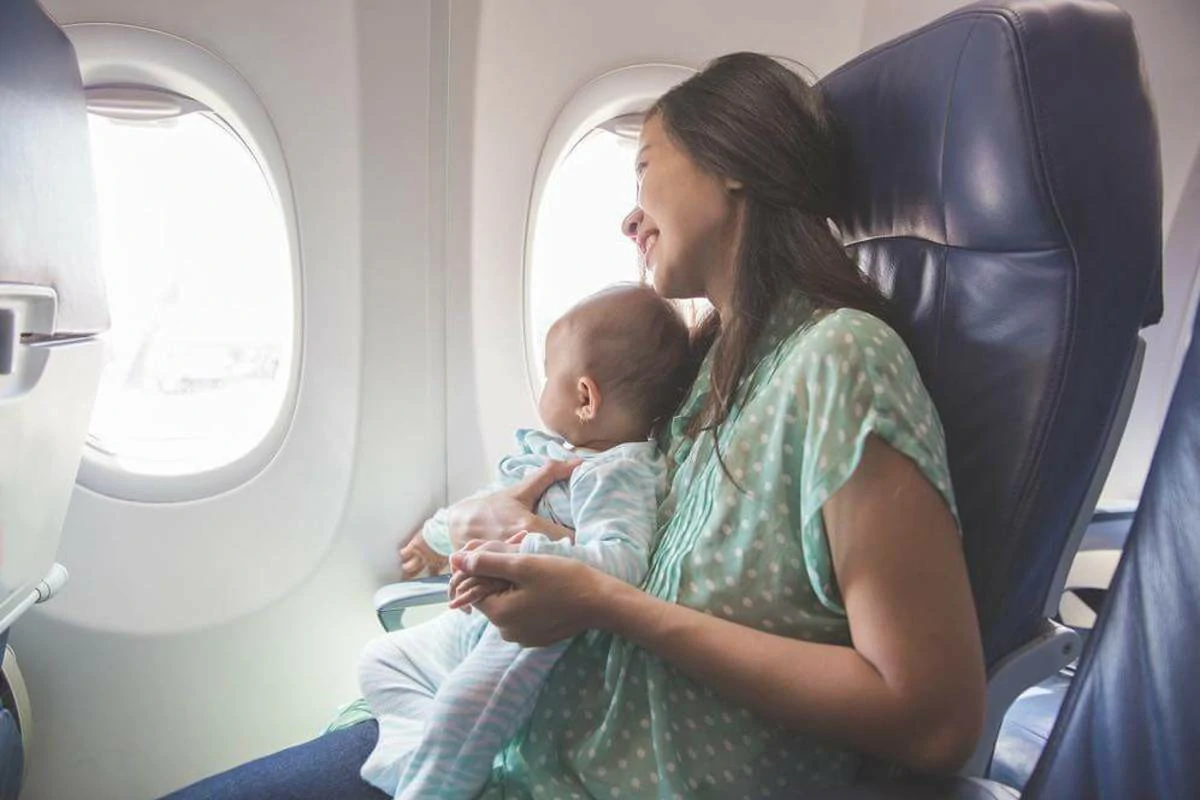
The term “lap infant” refers to a child under the age of two who travels on an airplane without an assigned seat.
Instead, the child sits on the lap of an accompanying adult for the duration of the flight. This can be a cost-effective way for families to travel with young children. Let’s break down the key aspects of lap infant travel:
1. Age Restrictions for Lap Infants
Domestic Flights: On the vast majority of domestic flights within the United States, children under the age of two can travel as lap infants. This means they turn two years old, a separate seat must be purchased for them.
International Flights: Age restrictions for lap infants on international flights can sometimes vary by airline. It’s essential to check with the specific airline for their policies regarding international travel with lap infants.
2. Safety Considerations of Lap Infants
While lap infants can usually fly safely, there are some important safety considerations parents and caregivers should be aware of:
Turbulence: In the event of unexpected turbulence, holding a child on your lap may be less secure than having them in an approved car seat-like restraint. The Federal Aviation Administration (FAA) strongly encourages the use of a child restraint system (CRS) for any child onboard an aircraft.
Infant Seatbelts: Some airlines provide infant seatbelts which are designed to loop through the adult’s seatbelt for added security in case of turbulence. However, these are not a substitute for a CRS.
Comfort and Security: A CRS can provide a more comfortable and secure place for your baby or toddler to rest during the flight, particularly if it’s a longer journey.
Individual Airline Policies: Be sure to check with your chosen airline for their specific rules and recommendations regarding child restraint systems. Some may allow you to bring your own FAA-approved CRS onboard as long as you’ve purchased a seat for your child.
Dr. Benjamin Hoffman Expert Opinion
Dr. Benjamin Hoffman, pediatrician and Chair of the American Academy of Pediatrics Council on Injury, Violence & Poison Prevention, stresses the potential benefits of using a CRS: “While lap infants can be safe, using an FAA-approved car seat or restraint provides an extra layer of protection. Even on a seemingly smooth flight, unexpected turbulence can occur, and a CRS offers the best chance of keeping your child secure.”
Airlines That Let 2-Year-Olds Fly Free
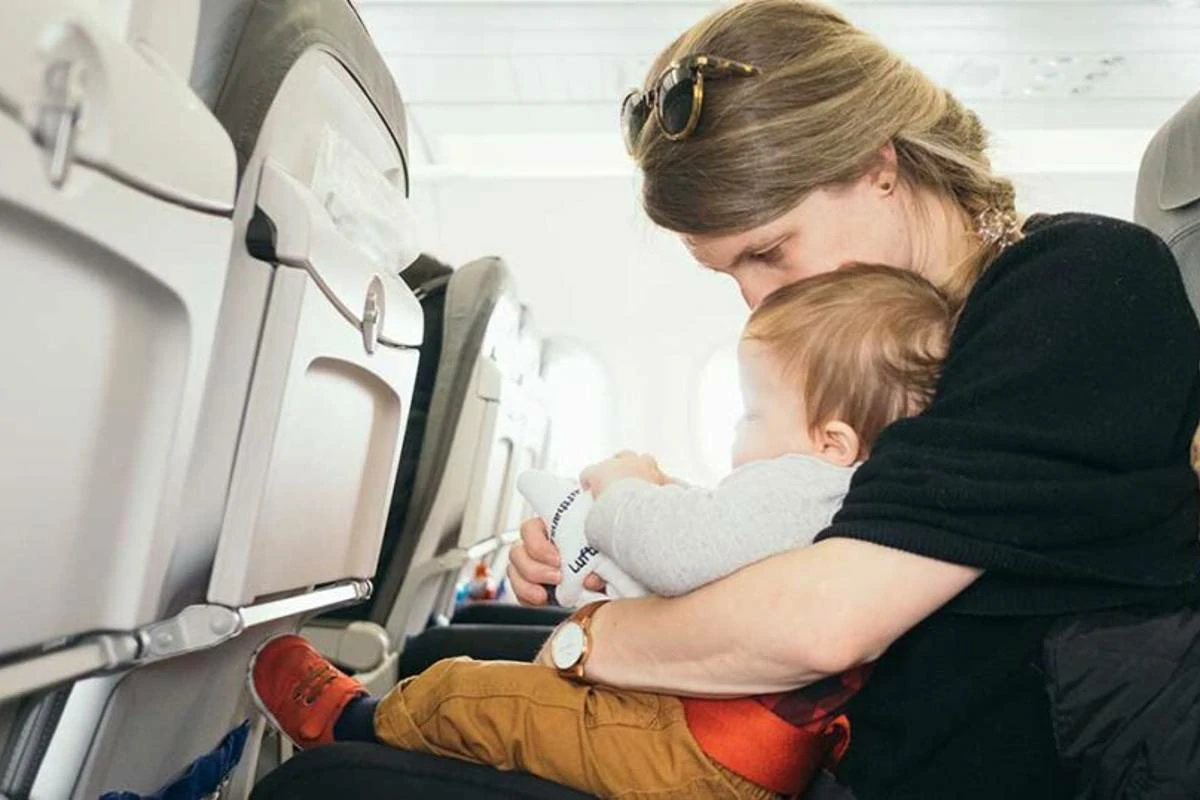
The good news is that most major airlines understand the financial challenges that come along with family travel. Let’s dive into the specifics of domestic and international carriers.
1. Domestic Airlines
Here’s a breakdown of lap infant policies for popular domestic airlines within the United States:
United Airlines: Children under the age of two can travel domestically for free as lap infants on United Airlines. For international flights, a 10% infant fare typically applies, along with any associated taxes or fees.
Delta Air Lines: Delta offers a similar policy, allowing children under two to travel as lap infants on domestic flights. International travel generally incurs fees and taxes, often a percentage of the adult fare.
American Airlines: American Airlines aligns with the standard lap infant policy, with free domestic travel for children under two. Expect taxes and fees to potentially apply when traveling internationally with a lap infant.
Southwest Airlines: Southwest’s lap infant policy is in keeping with other major domestic carriers. No additional ticket is required for domestic travel with a child under two sitting on a parent or guardian’s lap.
Alaska Airlines: Domestic lap infant travel on Alaska Airlines is free for children under the age of two. Consult their website for international lap infant policies as taxes and fees may apply.
JetBlue Airways: JetBlue follows the common lap infant policy for domestic travel. Check the airline’s website for international travel fees for lap infants.
Spirit Airlines: Spirit maintains consistent lap infant policies, similar to the other domestic airlines mentioned. Be sure to inquire about taxes and fees for international travel.
Sara Rathner Expert Opinion
Sara Rathner, travel expert at NerdWallet, recommends booking in advance: “To have the best chance of sitting together, book your flights well ahead of time and let the airline know you’ll be traveling with a lap infant. This may increase your chances of getting seats with better availability.”
2. International Airlines
While most domestic airlines within the U.S. have fairly standard lap infant policies, international travel sometimes has more nuanced rules and fees. Let’s take a look at a few popular international carriers:
British Airways: Children under the age of two can travel on British Airways flights as lap infants. However, on international routes, British Airways charges a percentage of the adult fare, typically 10%. Any related taxes or fees would also apply.
Air Canada: Air Canada’s policies align with British Airways. Children under two can fly as lap infants on international routes, but a percentage of the adult fare (usually 10%) and any additional taxes and fees would apply.
Lufthansa: Children under the age of two have the option of traveling as lap infants or occupying their own seat on Lufthansa flights. If flying as a lap infant on international routes, taxes, fees, and a percentage of the adult fare may apply.
Qantas: Much like the other major airlines, Qantas allows children under two to travel internationally as lap infants. They typically charge an infant fare of 10% of the adult ticket price, along with any applicable taxes or fees.
Many other international airlines follow similar policies for lap infant travel. It’s essential to always check with the specific airline you’ll be utilizing for their individual fees, taxes, and any additional regulations related to lap infants on international flights.
Ariana Arvanitis Expert Opinion
Family travel blogger, Ariana Arvanitis recommends planning ahead: “Researching airline policies and destination requirements well in advance of your international trip will help minimize surprises and ensure a smoother journey with your little one.”
Programs and Promotions
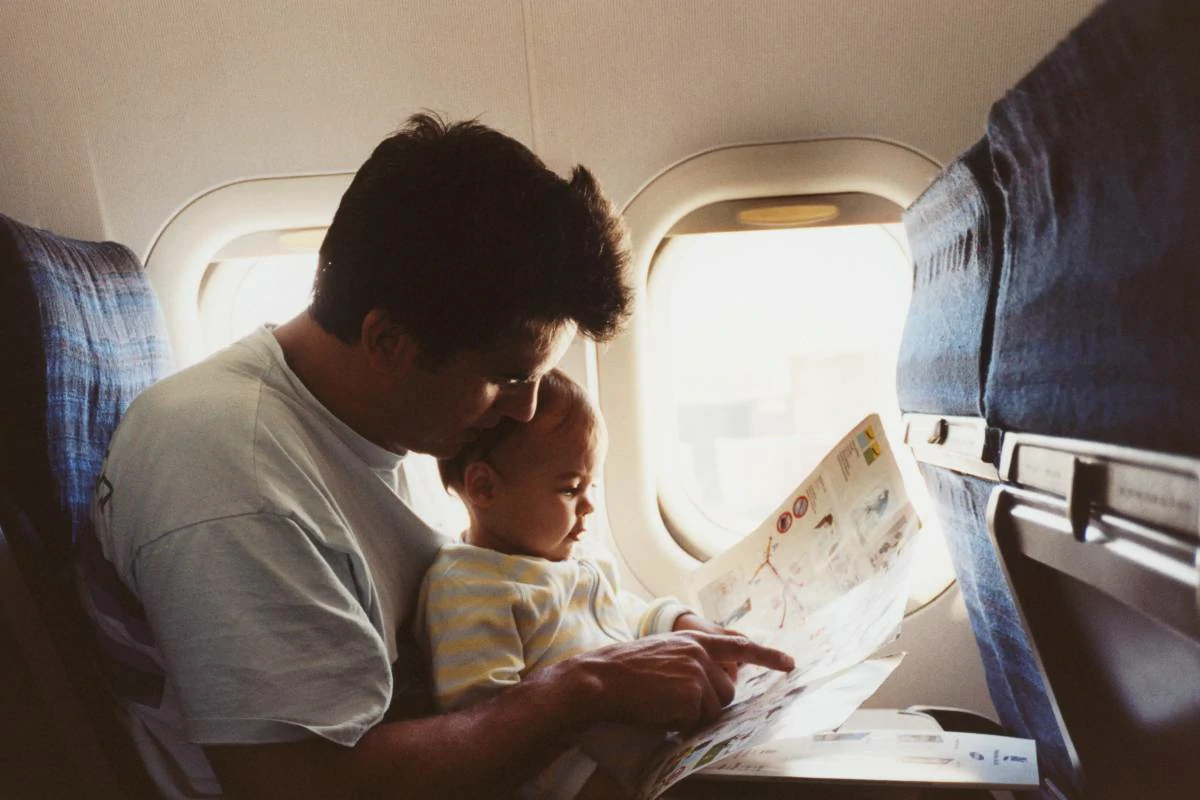
While most major airlines adhere to standard lap infant policies, there are a few special programs and promotions worth exploring if you’re hoping to find the best possible deals when flying with your two-year-old.
1. Frontier Airlines “Kids Fly Free” (with restrictions)
Frontier periodically runs their “Kids Fly Free” promotion, which offers significant savings for families. Here’s how it works:
Eligibility: The promotion is designed for members of Frontier’s Discount Den travel club, which has an annual fee. Kids must be under the age of 15 and be traveling with an adult who has also purchased a Discount Den fare.
Restrictions: Availability is limited and varies depending on routes and specific dates. Blackout dates are common, and the promotion may not be available for all flights.
Finding Deals: The best way to find out if the “Kids Fly Free” promotion aligns with your travel plans is to directly check the Frontier Airlines website or sign up for email alerts from the Discount Den program.
2. Southwest Airlines Companion Pass
Southwest’s Companion Pass is a unique perk that allows a designated companion to fly with the pass holder for free (plus taxes and fees). Here’s why this might be a great option for families:
Flexibility: If a parent or guardian earns a Companion Pass, this means your child under the age of two could essentially fly for free on Southwest flights when accompanying you.
Earning the Pass: The Companion Pass can be earned by accumulating a significant number of qualifying points from Southwest flights or by spending a certain amount on qualifying Southwest credit cards.
Value: If you are a frequent Southwest flyer, the Companion Pass can provide tremendous value, particularly for family travel.
Scott Keyes Expert Opinion
Scott Keyes, founder of Scott’s Cheap Flights, emphasizes the importance of flexibility: “The best deals on family travel often require flexibility with your dates or destinations. Subscribing to airline email alerts or following deal websites can help you spot potential savings.”
Tips for Flying with a Lap Infant

While traveling with a child under two as a lap infant can certainly save money, it requires additional preparation and planning to ensure a positive flight experience.
1. Booking Your Ticket and Adding a Lap Infant
Book Early: The sooner you book your flight, the better your chances of getting seats together and potential access to bulkhead rows, which often have more legroom.
Airline Options: While most airlines allow you to add a lap infant during online booking, some require you to call the airline directly to add a lap infant to your reservation. Check your airline’s specific policy.
Fees for International Flights: Remember that fees and taxes may still apply for lap infants traveling on international routes. Make sure to factor this into your budgeting.
2. Choosing the Right Seat
Bulkhead Seats: Bulkhead seats, located at the front of a section, typically provide more legroom. These can be a desirable choice if you’re traveling with a lap infant, but not all airlines allow lap children in bulkhead rows.
Window Seats: A window seat can offer some distraction for your child and potentially help minimize disturbance to other passengers.
Avoid the Back Row: Seats in the last row often don’t recline and may be located near the bathrooms, which can be a noisier and busier part of the plane.
3. Packing Essentials for Your Flight
Diaper Bag: Pack your diaper bag thoughtfully with all the necessities: diapers, wipes, changes of clothes (for both you and your child), snacks, formula or bottles, and a few small toys or books for entertainment.
Comfort Items: Bring along a familiar blanket or lovey that can provide a sense of comfort and security for your little one.
Nursing Cover (if breastfeeding): This offers additional privacy if you plan on nursing during the flight.
Carrier or Sling: If you’re flying solo with your lap infant, a baby carrier or sling can be invaluable for navigating the airport and even for soothing your child on the plane.
4. Managing In-Flight Comfort for You and Your Child
Takeoff and Landing: Changes in cabin pressure during takeoff and landing can be uncomfortable for babies’ ears. Encourage nursing, bottle-feeding, sucking on a pacifier, or drinking from a sippy cup to help alleviate this discomfort.
Entertainment: Bring along small, age-appropriate toys, books, or even downloaded videos on a tablet (with headphones!) to help keep your child engaged.
Snacks and Hydration: Pack a variety of healthy snacks and offer fluids regularly to keep your child hydrated and content.
Walks in the Aisle: If your child becomes restless, take a short walk up and down the aisle whenever it’s safe to do so.
Katie Dillon Expert Opinion
Katie Dillon, luxury travel advisor and family travel specialist, emphasizes the importance of mindset: “Traveling with a lap infant requires patience and flexibility. Set realistic expectations and try to go with the flow. Focus on enjoying the journey and creating new memories with your little one!”
Conclusion
Traveling with a child under two as a lap infant can be a cost-effective option for families, allowing you to save on the price of an additional airline ticket.
However, it’s essential to weigh the pros and cons carefully to determine if it’s the right choice for you and your child.
Here’s a recap of the key points to consider:
Airline Policies: Familiarize yourself with the specific lap infant policies of the airline you intend to fly with, especially regarding international travel.
Safety: While flying with a lap infant is generally safe, consider purchasing a separate seat and using an FAA-approved child restraint system for added protection.
Promotions: Explore programs like Frontier’s “Kids Fly Free” or the Southwest Companion Pass, which can potentially offer additional savings when traveling with a young child.
Preparation: Success when flying with a lap infant depends on careful preparation. Book in advance, pack strategically, and prioritize your child’s comfort.
Mindset: Embrace flexibility and patience. Focus on enjoying the experience of traveling with your little one.
FAQs
Can I bring a stroller on the plane?
Most airlines allow you to gate-check your stroller for free. It will be returned to you when you deplane. Some airlines may also allow small, collapsible strollers to be brought onboard and stored in the overhead bin.
What about a car seat?
If you purchase a separate seat for your child, you can bring an FAA-approved car seat onboard the plane. This provides extra safety and comfort for your child.
Is there a maximum age or weight limit for lap infants?
The standard age limit for lap infants is two years old. There generally isn’t a weight limit.
Do I need a passport for my lap infant when traveling internationally?
Yes, in most cases, even infants need passports for international travel. Start the application process well in advance of your trip.
Can I breastfeed during the flight?
Absolutely! Breastfeeding is welcomed on airplanes. A nursing cover can provide extra privacy if desired.

